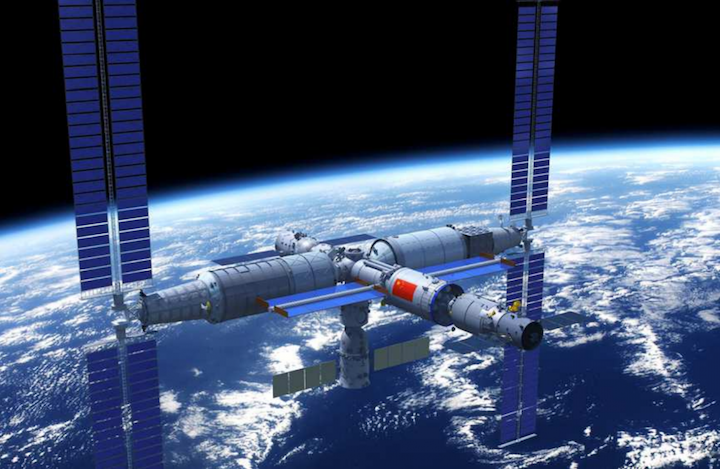
The Tianhe core module for the Chinese Space Station (CSS) being tested along with the docking hub at the Tianjin Assembly, Integration and Testing (AIT) Centre.
12.10.2018

A joint United Nations-China initiative to open the Chinese Space Station (CSS) to international partners has received 36 applications to send science payloads to the future orbital outpost.
The scheme is a collaboration between the United Nations Office for Outer Space Affairs (UNOOSA) and the China Manned Space Agency (CMSA), which manages China's human spaceflight and space station programme.
UNOOSA informed Gbtimes following a request for information that there had been 36 submissions spanning a wide range of areas of research which will now undergo evaluation.
"We have received 36 applications from countries all around the world. These will need to be examined to determine whether they are eligible or not and are not available to be publicly shared. Most of the applications were joint efforts proposed by experts, researchers, professors, and/or other professionals.
"The subject areas of the applications were diverse and included asteroid redirection, ultraviolet astronomy, extended nebulae, astrophysics, plasma physics, fluid physics, material engineering, combustion science, engineering thermo physics, radio frequency, space medicine, space life science, health, biotechnological research, Earth observation, block chain technology and secure data transmission and autonomous intelligent space robotic manipulation," UNOOSA stated.

The Tianhe core module for the Chinese Space Station (CSS) being tested along with the docking hub at the Tianjin Assembly, Integration and Testing (AIT) Centre.
The UNOOSA-CMSA agreement was signed in 2016. Applications were invited in May this year and accepted until the end of August.
The initiative, similar in function to the Japan-UN KiboCUBE programme, provided three possibilities: conducting experiments inside the CSS by utilising experiment payloads developed by selected applicants; experiment facilities provided by China; or conducting experiments outside the CSS.
According to UNOOSA, among the 36 applications were: "14 pursuing space experiments inside the CSS by using payloads to be developed by themselves. 11 were seeking opportunities to utilize payloads already developed by China for their experiments inside the CSS. 11 were looking forward to flying their experiments outside the CSS by utilizing their owned developed exposed payloads.
UNOOSA states that it and CMSA will, "work together within the next three months to conduct a Preliminary Selection, which will focus on eligibility review and scientific merit evaluation. All applicants will be informed about the results at the end of the first selection. Short-listed applicants will be required to submit their implementation schemes for final selection."
China is currently looking to launch the first module of the CSS, named Tianhe, in 2020, following tests of the launch vehicles needed to get the roughly 20-metric-tonne spacecraft into low Earth orbit. Tianhe will then be visited by Tianzhou cargo and Shenzhou crewed spacecraft.
The basic CSS configuration will be completed with the addition of two similarly sized experiment modules, Mengtian and Wentian, around 2022. A Hubble Space Telescope-class optical module, Xuntian, will also co-orbit with the facility.
The space station could be doubled in size to six modules according to a senior official speaking at the International Astronautical Congress in Germany last week.

A slide presented at IAC 2018, which shows the potential expansion of the Chinese Space Station.